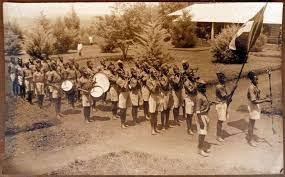The Imperial British East Africa Company (IBEAC) formally ended its involvement in Uganda on March 31, 1893. This decision was influenced by missionaries, led by Alfred Tucker, who lobbied the British government to take over the administration of Uganda. They argued that a British withdrawal would lead to continued civil war between the different religious factions in the region.

Background of IBEAC’s Involvement
The IBEAC’s involvement in Uganda began in the late 19th century, with the company playing a significant role in the region’s administration. However, the company’s presence was marked by conflict and power struggles between various religious factions, including Catholics, Protestants, and Muslims.

Transition to British Protectorate
Following the IBEAC’s withdrawal, the British government established the Uganda Protectorate on June 18, 1894. This move aimed to maintain stability and prevent further conflict in the region. The British government signed treaties with local leaders, including the Kingdom of Buganda, to solidify their control.

Key Figures and Events
- Alfred Tucker: A missionary who led the lobbying efforts for British takeover.
- Sir Gerald Portal: A British representative who proposed a plan of double chieftainships to balance Protestant and Catholic power.
- Mwanga II: The Kabaka (king) of Buganda, who was restored to power after being ousted in a coup.
- Uganda Agreement of 1900: A treaty that solidified British control and established a system of administration in Uganda.
The transfer of power from the IBEAC to the British government marked a significant turning point in Uganda’s history, shaping the country’s development and relationships with European powers.



